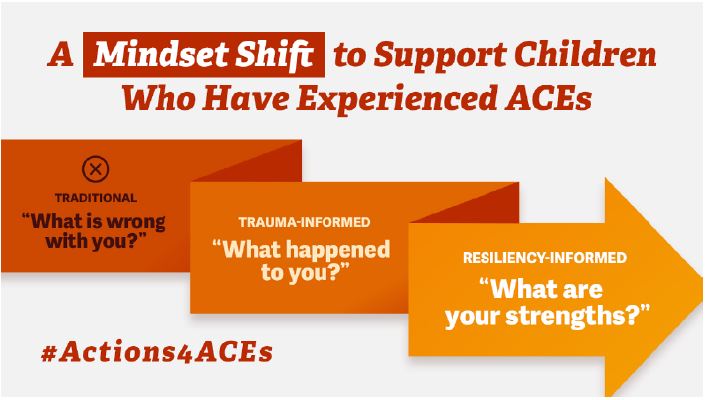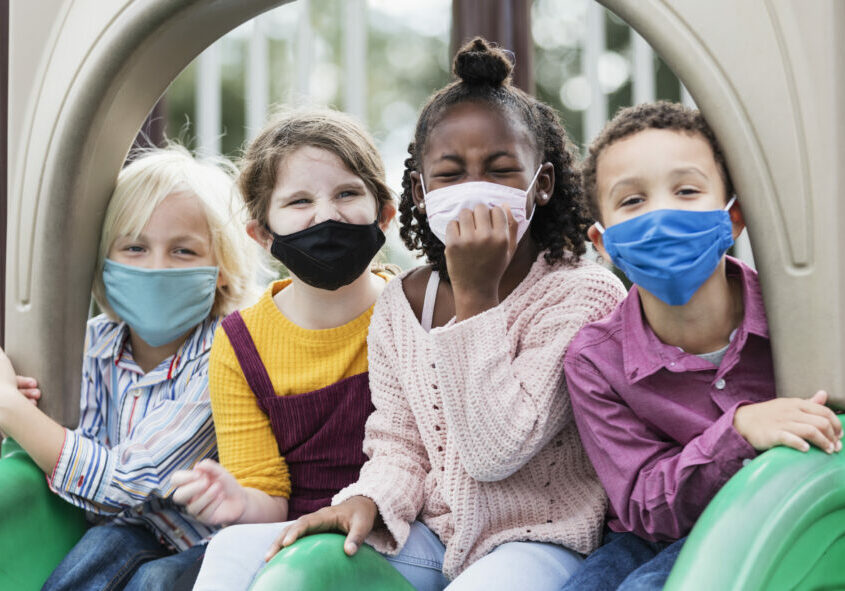Adverse childhood experiences (ACEs) are potentially traumatic events, such as parental separation, violence, abuse or neglect, that occur during childhood. Experiencing multiple or chronic ACEs may lead to toxic stress, in which the body’s stress response system is activated for a prolonged period. This can profoundly affect the development of a child’s brain architecture, causing lifelong harm to physical, mental, and emotional health.
As educators and school staff, we can help children heal and build resilience by taking simple actions to reduce the impact of trauma. In this monthly series, “Taking Action,” I speak with educators and school staff about the things they are doing to help all children thrive.
Angela Coxen: NJEA ACCESS model consultant
Interviewed by Amanda Adams
I recently spoke with Angela Coxen, an urban educator for more than 30 years, who now consults with schools throughout New Jersey in support of the ACCESS program, originally known as the Priority Schools Initiative. ACCESS stands for “A Community Collective for Equitable and Sustainable Schools.” Angela works with school leaders and offers teacher-focused mentoring, support, and professional development—including ACEs training.
Q. How is this year different from previous years?
In short, my work doubled during the pandemic. COVID-19 has had a dramatic effect on teachers and students alike. For example, during the pandemic there were teachers who needed more help managing unprecedented challenges, like not being able to interact with their students in person.
Luckily, I had previously trained school staff on ACEs, so we already had goals for social and emotional support. In training, we ask ourselves the following questions: How does student discipline change now that we are aware of ACEs? How should we approach problems? In addition, we have guidance on what to say to students who might be struggling, such as: How can we help? Is anything going on? Do you need to share something? Do you want to see a counselor?
Once the pandemic hit, we continued to follow the goals we had previously set, but we adjusted them in this new environment.
Tragically, my school suffered several student deaths. This is ACEs at its worst. We called the parents, I orchestrated healing circles, and I held wellness check-ins for the teachers, for the parents, and for the students. We went over the questions we should be asking, reviewed the pausing factor—in other words, silence is okay—and we gave young people an opportunity to express themselves.

Q. How can teachers and educators help children bounce back from the trauma of the pandemic, and how have you used healing circles with staff and with their students?
I was trained in circle practice many years ago through NJEA, and I have hosted and facilitated healing circles across the world. I hold circles for the teachers I work with, where we allow shared voice. The focus is not on fixing the problem, it’s about creating a space for one to feel free to unload what is on their mind. These circles offer an opportunity to listen and show compassion. I also guide teachers on how to run healing circles in their classes, and how to create safe spaces. I also host circles for parents, for them to express how they are feeling.
Q: Can you tell us a bit about how ACEs have played a part in your own professional career?
I started my career as a language arts teacher in a middle school in Paterson. The school where I taught was in the middle of gang territory. Every year, I had around 25 to 30 middle-schoolers. Several already had records or were involved in illegal activities. These children seemingly had a lot working against them, so I quickly understood my role was to teach more than academics. I was determined to create a safe space for them. Yes, I taught them how to write an essay, but much more than that, I taught them coping skills and resilience. Fast forward to today, many of my students are successful adults, and I firmly believe, and they will tell you, that it is in large part due to the skills I taught them back in middle school.
Q: How did you get involved in ACEs work?
I would describe myself as part of the original think tank of the NJEA ACEs team. I was one of the first people in New Jersey trained on ACE Interface by its co-founders and creators.
The work we do is truly focused on a mindset shift. Instead of saying to a child, “What’s wrong with you?” we say, “What happened to you, and how can I help?” This simple concept is at the core of our work.
Today, I am an ACEs Master Trainer. I don’t know how many people I’ve trained. I’ve lost count. When asked if I’m available, I adjust my schedule to make it work. The highlight of my work is that I was able to present in Paterson, the town of my birth and of my career, and my third-grade teacher was on the call. It was personal and emotional. When we discussed resilience factors and community efforts, I knew what the missing piece was, because I knew the community members who were forgotten or left out of these conversations in the past. I was able to talk about ACEs, about healing, and put myself in that work.
Q. Can you share a brief story about a specific instance where you saw a child who was struggling?
I worked with a fourth-grade teacher who was frustrated with her students’ math and money skills. She said to me, “They should know this. They should know money. How have they not learned math and money at this point?” I said to her, “Are you going to teach them or are you going to criticize them? When they leave you, are they going to fifth grade not knowing money, or are you going to take the time to teach them?”
We have to remind ourselves, based upon their life, maybe no one has ever taught them money. I had to teach the teacher that there is nothing wrong with the kids. It’s just that nobody has taught them. We then found games for the students, and they learned money in just one day. I asked the teacher, “What did you learn?” She said, “I learned that it is not their fault.”
So what I teach in ACEs training is to have teachers come to a situation with a different mentality. Instead of saying, “They should know this, and they are failing,” as educators we should pause and say, “Let’s teach it.”
Q. Why should educators get training on Adverse Childhood Experiences (ACEs)?
It’s critical for teachers and all school staff to understand what their students may be dealing with in their life. Understanding will help teachers change their approach and their protocols. It’s a caring approach. It’s a virtual hug that says, we care about you and want you to be okay. By being ACEs-aware, we can change the culture.
Q. What can educators do to turn their schools—or their classrooms—into places of healing and connection?
To turn a school into a healing-centered school, everyone must be on the same page as far as knowledge goes. Going through the ACE Interface training is just the beginning. Next, school communities should get together, and based upon what stood out to them, ask, how does this fit in our community? What kind of practices do we want to set in place?
What does that look like? In Camden, one school had a parent night where the principal set up winter coats in one room and nonperishables in another room. That night she said to the community, “We know you have needs, and this school is taking care of coats and taking care of bellies.” That said to the community, “We care for you, we’re here for you, here is some support for you.”
Everyone needs to be listened to, and everyone needs to be at the planning table. What are the first things that we can offer our community? How can we help?
Q. Do you have any tips for educators—or other school staff—about how they can help kids build resilience?
We need to teach our children coping strategies. We need to get them focused on positive practices, such as practicing yoga, quiet reflection, breathing, reading, playing music, writing poetry, painting and dancing.
We also need to make our children feel valued and let them know they are doing well. Tell them when they are good at something, tell them you are proud of them, and help them lean into that skillset.
When we are trauma-informed, it takes the shame and blame away from the child, and it centers the conversation on how we can support these children. It’s also understanding that what hasn’t been learned yet isn’t learning loss, it’s an opportunity for a new way to teach.
By building supportive relationships with children, you can help reduce the impact of ACEs while building children’s resiliency. To learn more, go to Actions4ACEs.com.
Actions 4 ACEs is a statewide initiative to build awareness about adverse childhood experiences (ACEs) and the role adults can play in reducing the impact of trauma and helping children heal. Actions 4 ACEs offers educators invaluable resources and materials to better inform, educate and activate.
